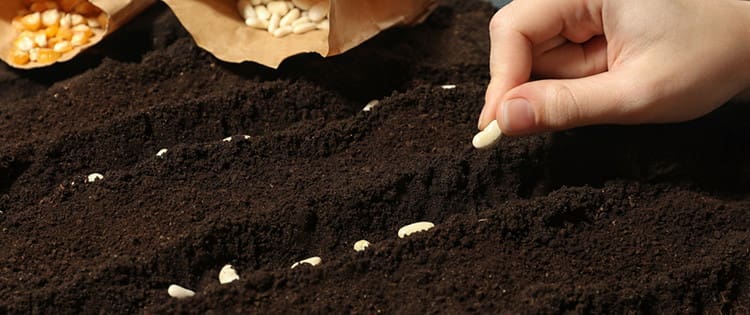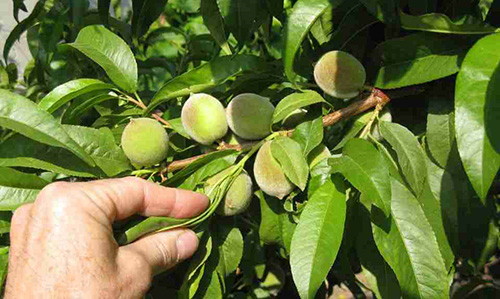It’s quite easy to purchase vegetable and flower seeds each year from the local gardening center, nursery, or grocery store.
You may not have thought about harvesting your own seeds or you may think the process is too difficult. This article discusses some general harvesting tips to give you enough basic knowledge to be confident and successful.
Gathering Seeds
Choose seeds from your best-producing plants.
For optimal results, let the seeds mature on the plants before harvesting. This means leaving the fruit or vegetable on the plant longer than you normally would.
For example, cucumbers are soft to touch and turn yellow when mature. Peas and beans should be dry. Flowers should stay on the plant until fully ripe and dry as well.
Oftentimes, seeds from mediocre or poor producers won’t give you the results you want. Also, the fruits and vegetables you buy at the store are usually picked prematurely so they won’t produce mature seeds either.
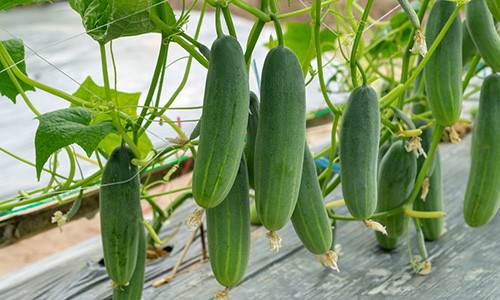
Storing Seeds
Seeds should be stored in a dry, dark place with consistently cool temperatures like a cupboard, basement, or cellar.
Most seeds won’t survive the temperatures of a freezer (unless for stratification purposes) and a refrigerator is too moist. Keep the seeds in an air-tight container. Jars work well; some gardeners prefer to use envelopes. Label the container with the type of seeds and include any relevant planting instructions.
The germination rate will drop if you keep the seeds longer than a year although some of the seeds will still grow.
Related: 10 Foods Not To Store
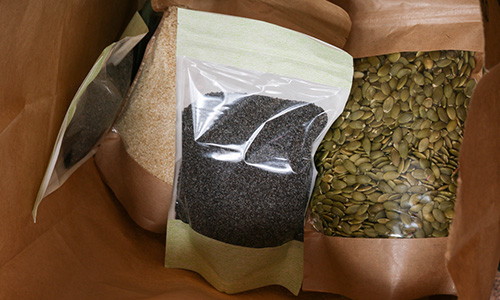
Fermenting Seeds
Tomatoes, melons, and cucumbers have slippery coatings to their seeds.
You can remove this coating easily by fermenting the seeds. This way, it will be easier to clean the seeds and store them, however, the seeds will still grow without removing the coat.
- First, scoop out the seeds into a container. Add water to cover them and place the container in a warm place that is not in direct sunlight. Some light is fine.
- Every day, stir the seeds. At first, the seeds will float. They will drop to the bottom of the container when ready. That is your clue to rinse the liquid and vegetable matter off the seeds (i.e., the pulpy material) and then let them dry before storing.
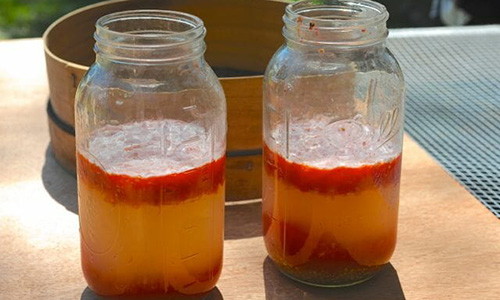
Drying Seeds
Remove the seeds from the ripe fruits and vegetables and also the attached pulp through the process of fermentation mentioned above (for those fruits and vegetables that have a coating to their seeds).
Remember to pick the seeds when the fruits or vegetables have ripened or dried out. For example, if you are reseeding corn, allow the ears to remain on the plant until the leaves are wrinkled and dry. Spread the seeds on a countertop, screen, or paper. Allow enough airflow for the seeds to dry completely.
Depending on the size and type of seed, 1-3 weeks should be sufficient.
Related: DIY Solar Dehydrator
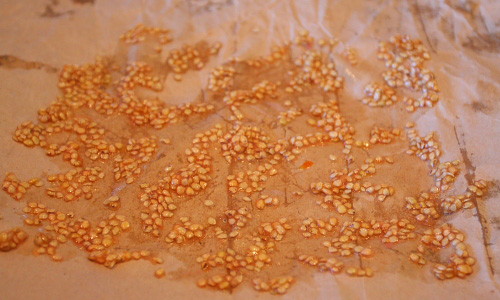
Natural Reseeding
Some types of flowers reseed without your intervention. Just stop deadheading them in late summer to allow the seed heads to develop.
The seeds will blow in the wind and reseed themselves. Otherwise, at the end of the growing season and after the seed head has developed and dried, you can shake the seeds loose and store them.
Planting for the Purpose of Reseeding
Don’t expect to eat the herbs, vegetables, and fruits that you are planting to grow for seeds.
Rather, decide which plants will be used for the purpose of reseeding and designate an area of your garden or some pots for those plants. One to two plants per species will be more than enough for that purpose.
For example, if a leafy vegetable like lettuce produces flowers, it will no longer be good to eat.
The easiest seeds to start harvesting besides flowers (as mentioned above) are those with bigger seeds like melons, cucumbers, tomatoes, peppers, and beans.
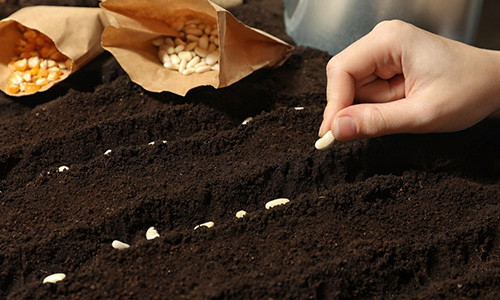
Herbs and Small Seeds
Allow the plant to flower and the flower to seed.
As the flowers begin to die, you can attach a paper bag over the seed head to catch the seeds or cut the seed head off the flower completely and put it in a paper bag to dry. Small seeds are easily lost if they are not contained.
Watch for the seeds to turn color, typically dark brown to black when mature and dry. Once they have dried, separate the seeds from the vegetable matter if needed and store them.
Planting Stone Fruits (like Peaches, Cherries, Nectarines, etc)
Depending on your climate, the pits of stone fruits can be planted to grow new trees.
Usually, the seeds need a period of cold stratification to germinate. If you live in an area with ideal conditions, you can plant the seed in a pot or in the ground in the fall or winter; they will be ready to germinate in the spring.
To help with sprouting, tap the pit with a hammer to remove the hard outer casing of the internal seed. Plant the internal seed only. Some seeds may need to be soaked before planting.
Check the growing conditions for your specific fruit before planting.
Heirloom Vs. Hybrid
Heirloom seeds produce plants that have the same characteristics as the parent plant so you know what type of product will be produced.
However, the seeds from hybrid plants will not give the same result since hybrids are a combination of two varieties of plants that produce a third plant with unique traits. The seeds from the third plant contain random genetics that won’t match the parent plants but will be a mix and possibly have poor characteristics of the parents/grandparents (e.g., lack flavor, yield small fruit, be poor producers, etc.). If available, choose heirloom seeds over hybrid seeds.
Hopefully, these tips will help you with harvesting seeds from the plants you are growing.
Like anything else in life, practice, practice, and practice… and you will be well on your way to gardening success!
You may also like:
Similar to Morphine: The Best Natural Painkiller that Grows in Your Backyard (Video)
Strange Gardening Tips And Tricks That Really Work
10 Fruits And Veggies To Dehydrate For Long-Time Storage
Vegetable Independence – 100% Self-Reliant Vegetable Production
